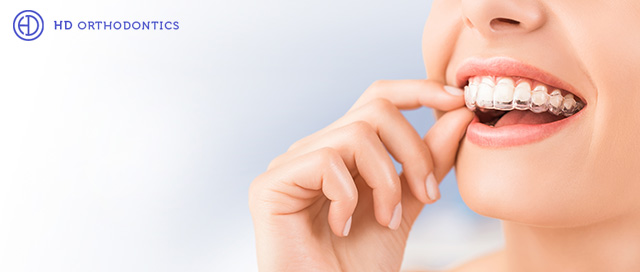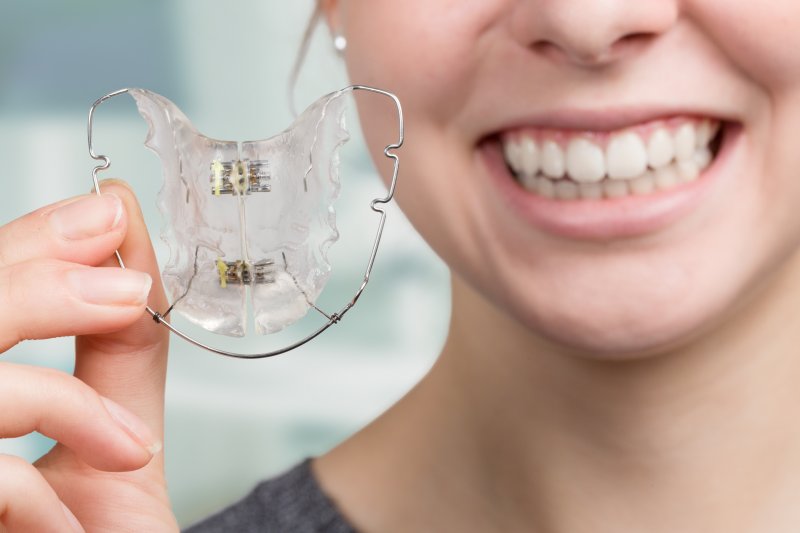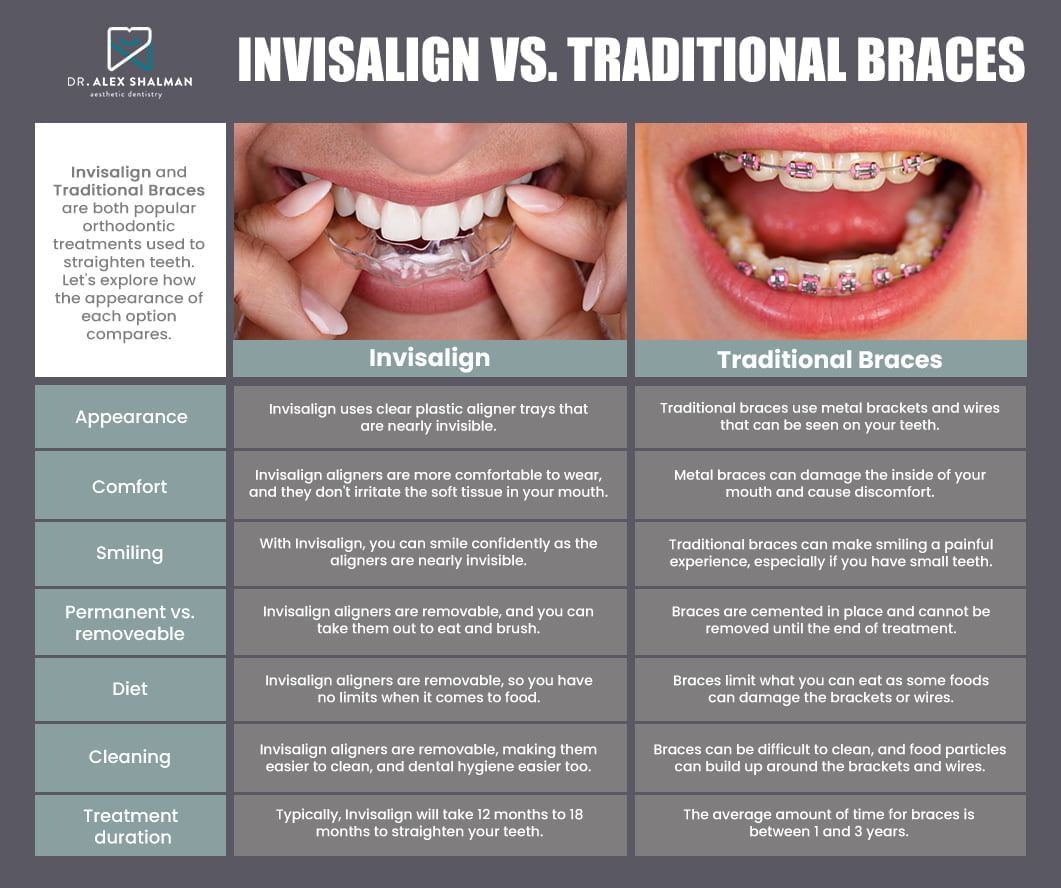Frequently Asked Questions About Invisalign: Everything You Required to Know
Frequently Asked Questions About Invisalign: Everything You Required to Know
Blog Article
Invisalign vs. Traditional Braces: Which Choice Is Right for You?
When thinking about orthodontic therapy, the choice between Invisalign and typical braces provides a number of crucial elements that merit cautious examination. Invisalign supplies a very discreet choice with detachable aligners, while standard dental braces offer a more visible yet effective solution for severe misalignment.
Review of Therapy Choices

In comparison, traditional braces contain steel brackets and cables that are adhered to the teeth. This approach applies continual stress over time to achieve positioning. While effective for intricate orthodontic problems, conventional dental braces call for normal gos to for changes and can posture challenges in preserving oral hygiene as a result of the problem of cleaning about cables and brackets.
Both choices have their benefits, and the option usually depends upon particular oral problems, way of life choices, and individual conformity. Inevitably, consulting an orthodontic professional is vital for identifying one of the most appropriate therapy plan tailored to individual needs. Recognizing the nuances of each alternative can considerably affect the total success of orthodontic treatment.
Aesthetic Factors To Consider
A considerable aspect affecting the option between Invisalign and traditional dental braces is the visual charm each treatment provides. Invisalign aligners are crafted from clear plastic, making them virtually invisible when used. This discreet appearance is especially attracting teens and grownups that might feel uncomfortable regarding their orthodontic treatment. The capacity to maintain an all-natural smile throughout the placement process can substantially improve the patient's self-confidence in social and professional setups.
On the other hand, typical braces include metal braces and cords, which can be extra obvious. While developments in orthodontic innovation have brought about the advancement of smaller brackets and colored elastics, traditional braces still maintain an even more obvious profile. For some individuals, the presence of braces may prevent them from looking for required therapy.
Inevitably, the selection in between Invisalign and standard dental braces may rest on personal preferences regarding looks. People that focus on discretion often favor Invisalign, while those who are less concerned regarding exposure might decide for standard dental braces. Recognizing the aesthetic effects of each option is crucial for making an educated choice that straightens with one's way of life and choices.
Comfort and Convenience

In regards to convenience, Invisalign aligners are detachable, allowing individuals to appreciate their favorite foods without constraint and maintain optimum oral health. Cleaning and flossing are streamlined, as the aligners can be secured during these regimens, whereas standard dental braces need mindful navigating around braces and cables.
Additionally, Invisalign's progressive system allows for fewer orthodontic gos to. People typically get multiple collections of aligners at the same time, which can improve the therapy process and reduce time spent in the orthodontist's chair. On the other hand, typical dental braces necessitate regular modifications, making them much less convenient for those with hectic schedules. Invisalign. Generally, the comfort and convenience of Invisalign make it an attractive selection for several individuals seeking orthodontic therapy.
Therapy Duration and Efficiency
While both Invisalign and conventional braces are effective in dealing with dental misalignments, the period of treatment can vary significantly in between the 2 options. Commonly, Invisalign therapy can take anywhere from 12 to 18 months, depending on the complexity of the instance. The clear aligners work by slowly changing teeth right into their wanted placements, and normal follow-ups with an orthodontist assistance guarantee development continues to be on track.
On the other hand, typical braces typically require a longer commitment, generally varying from 18 months to three years. This results from their fixed nature and the usage of cords and braces, which can be more reliable for complex instances and severe misalignments (Invisalign). The treatment performance of conventional dental braces is well-documented, as they permit precise adjustments and greater control over tooth movement
Ultimately, the choice in between Invisalign and traditional braces may depend upon both the expected treatment period and the certain oral issues handy. Consulting with an orthodontist is important, as they can offer customized suggestions based upon individual needs, guaranteeing the chosen method aligns with wanted timeframes and outcomes.
Expense Comparison and Insurance Options
Price continue reading this plays a considerable function in the decision-making process for individuals thinking about orthodontic therapy, whether opting for Invisalign or standard dental braces. On average, the price of Invisalign ranges from $3,000 to $8,000, while typical braces generally set you back in between $2,000 and $6,000. Elements affecting these costs consist of the complexity of the situation, the period of therapy, and geographical area.
Numerous oral insurance coverage strategies supply partial protection for orthodontic treatments, yet the specifics can differ extensively. Typically, typical braces may be extra frequently covered by insurance strategies contrasted to Invisalign, which some insurance providers categorize as a cosmetic treatment.
Furthermore, several orthodontic practices provide versatile settlement plans, making both therapy alternatives a lot more obtainable. Individuals should ask about prospective financing choices and discount rates article for in advance settlements. Examining the total cost, including insurance benefits and layaway plan, is important for making an informed choice that aligns with both aesthetic choices and budget plan factors to consider.

Verdict
In recap, the choice in between Invisalign and conventional braces hinges on multiple aspects, consisting of visual preferences, comfort, therapy duration, and price. Invisalign provides a very discreet, detachable choice that helps with oral hygiene and nutritional flexibility, while typical dental braces might be preferable for intricate oral concerns and typically come at a reduced cost factor. Eventually, assessment with an orthodontist is vital to assess specific circumstances and establish one of the most suitable treatment option for accomplishing ideal dental placement.
When considering orthodontic treatment, the selection between Invisalign and standard braces offers numerous crucial variables that merit mindful analysis.Comparing Invisalign and conventional braces discloses distinctive treatment alternatives for orthodontic correction.While both Invisalign and traditional dental braces are reliable in correcting dental imbalances, the duration of treatment can differ considerably between the 2 choices.Cost plays a significant duty in the decision-making procedure for individuals thinking about orthodontic treatment, try here whether opting for Invisalign or conventional braces.In recap, the choice in between Invisalign and traditional braces hinges on numerous elements, consisting of aesthetic preferences, convenience, treatment period, and cost.
Report this page